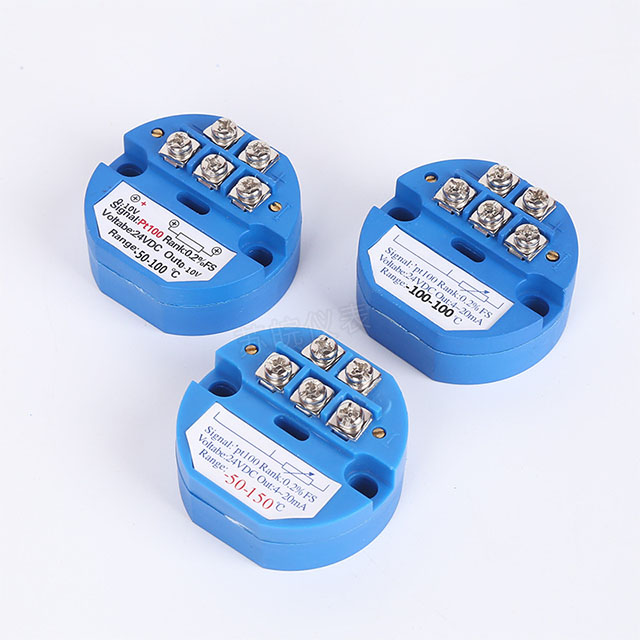Temperature transmitters are very important and common components in systems. But what is a temperature transmitter, how does it work, why we should use it, etc. This article will provide all the information you want to know. Let’s get started now!
Table of Contents
What is a temperature transmitter?
Temperature transmitter is a device that converts temperature signals into standard electrical signal outputs such as 4-20mA current signal or 0-5VDC, 0-10VDC voltage signal. This allows measured temperature to be transmitted to SCADA systems or touch screen monitoring systems over long distances.

How does a temperature transmitter work?
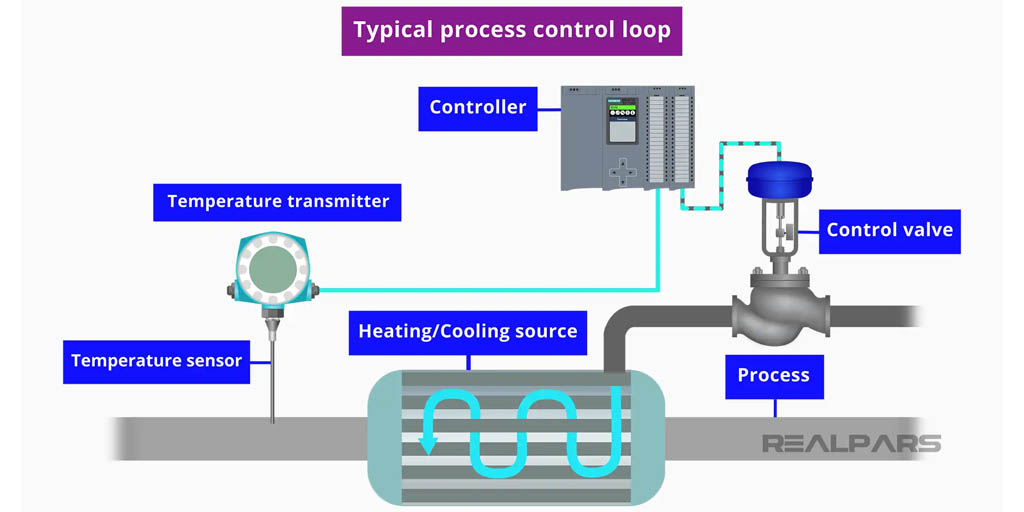
The working principle of the temperature transmitter is to convert the temperature signal measured by temperature sensors such as resistors, thermocouples, and thermistors into standard signal outputs, such as 4-20mA, 0-5V and other signals. Let’s take the resistive temperature transmitter as an example to explain its working principle:
- Measuring temperature: Temperature transmitters usually use resistance elements such as platinum resistors (Pt100, Pt1000) as temperature sensors. When the temperature changes, the resistance value will also change accordingly. By measuring changes in resistance, changes in temperature can be determined.
- Signal conversion: The temperature transmitter converts the measured resistance value into a standard signal output, usually a 4-20mA current signal or a 0-5V voltage signal. In this way, the measured temperature signal can be transmitted to a device such as a remote control room or data logger.
- Compensation: Due to the different temperature coefficients of resistive elements, the temperature transmitter needs to perform corresponding temperature compensation to ensure the accuracy and stability of the output signal. In general, the working principle of the temperature transmitter is to convert the temperature signal into a standard electrical signal output. It has the characteristics of high precision, good stability, and strong anti-interference, and can meet the temperature measurement requirements of industrial automation systems.
Temperature transmitter wiring diagram
By reading the previous section, we understand how the temperature transmitter works. A new question arises, how should the temperature transmitter be wired? Today, we will take the TMT181 transmitter as an instance to wire
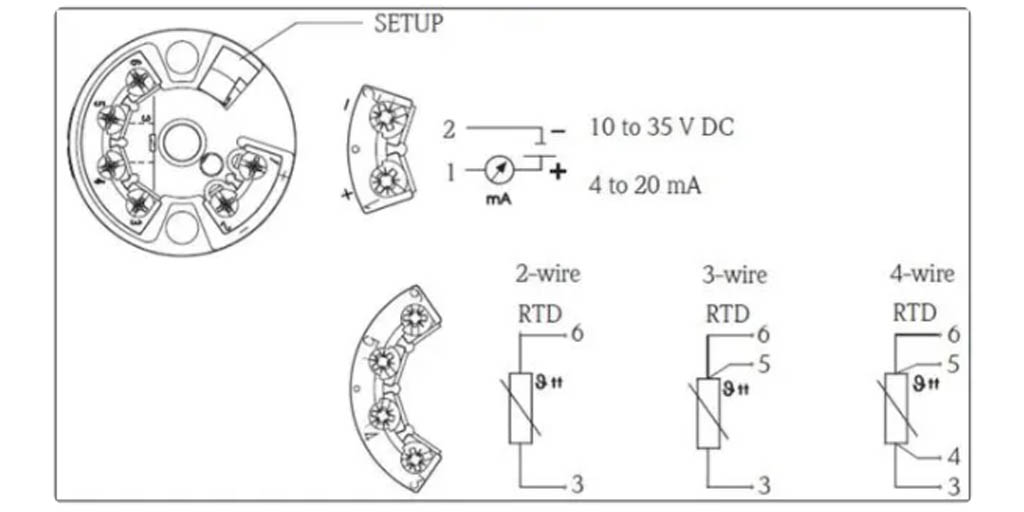
The power supply is two-wire 10-35VDC, so terminal 1 is connected to the positive pole of the DC power supply, and terminal 2 is connected to the negative pole of the DC power supply.
Because TMT181 can only be connected to thermal resistors, not thermocouples. Therefore,
- For a two-wire RTD, connections need to be made to terminal 3 and terminal 6.
- For a three-wire RTD: connect 3 on one end and 5 and 6 on the other end.
- For a four-wire RTD: Connect the two wires on one end to 3 and 4, and the two wires on the other end to 5 and 6.
Why do we need to use a temperature transmitter?
First, the temperature transmitter can monitor temperature changes during the production process in real time.
Temperature is an important parameter in many industrial production processes.
If the temperature is too high or too low, it may have a serious impact on production and even cause equipment damage or production accidents.
The temperature transmitter can sense temperature changes in time and transmit the signal to the control instrument, thereby realizing timely monitoring and control of temperature.
For example, in the petrochemical industry, temperature transmitters can be used to monitor the temperature of various devices in the oil refining process, and automatically adjust the temperature through control instruments to ensure the smooth progress of the production process.
Secondly, temperature transmitters are crucial to the protection and safety of equipment.
Many devices need to be kept within a specific temperature range during operation to function properly.
The temperature transmitter can monitor the temperature of the equipment in real time and issue an alarm or cut off the power supply according to the set threshold, thereby ensuring that the equipment operates within a safe temperature range.
For example, generators in the power industry need to be kept running within a suitable temperature range to achieve optimal results. Temperature transmitters can monitor the heating of the generator in a timely manner and issue alarms or automatically cut off the power supply based on the set temperature threshold. To protect the safe operation of the generator.
How to choose the right temperature transmitter?
To choose the right temperature transmitter, there are several factors need to be into consideration:
- Type of temperature sensor you are using. There are 4 types of temperature sensors available in the market, they are thermocouples, RTD (Resistance Temperature Detector), thermistors and semiconductor ICs. Different temperature sensors have different wiring and working principles, so a suitable temperature transmitter should be selected to match them
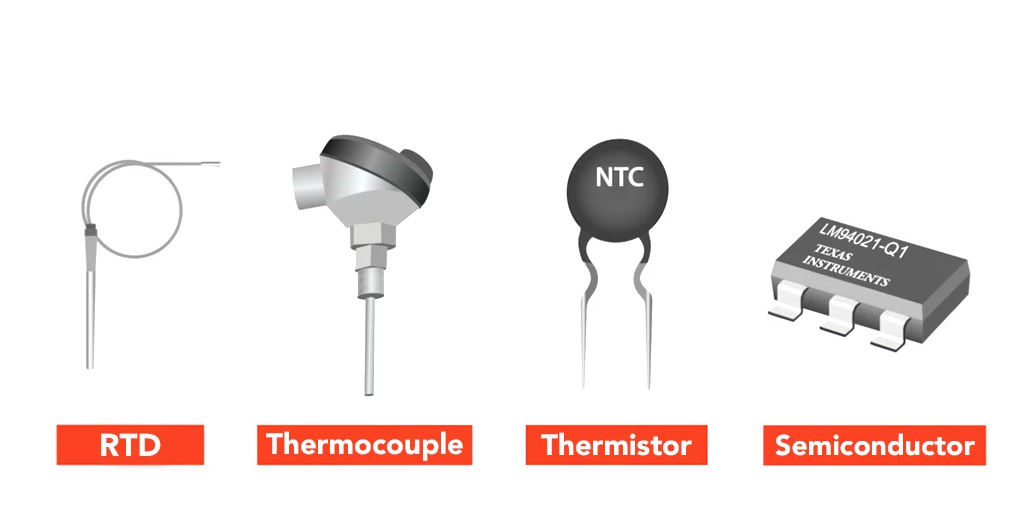
- Transmitter installation location. According to different installation methods, temperature transmitters are divided into DIN rail mounting type and screw fixed type. DIN rail mounted products can be mounted on a DIN rail along with other electrical equipment. The screw-on type is usually installed in the cavity of the temperature sensor head.
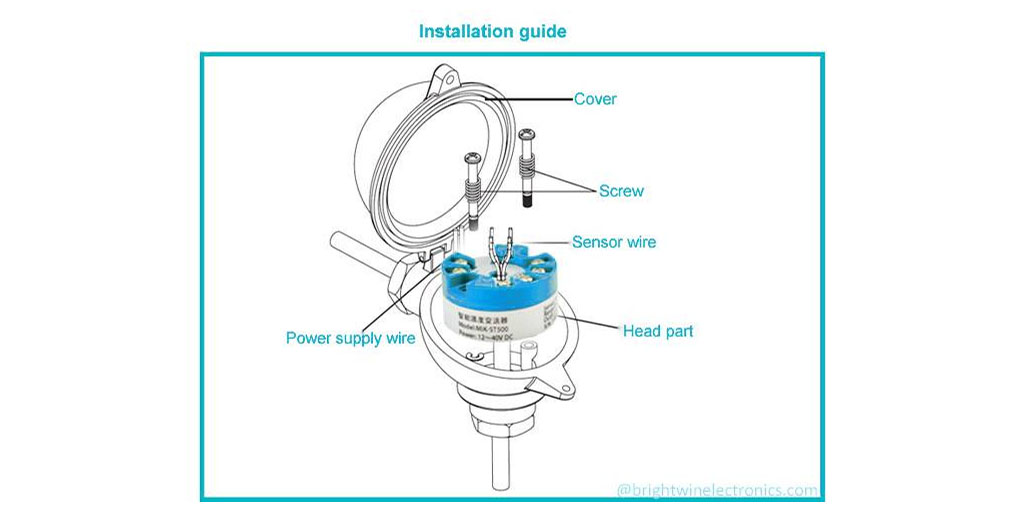
- The signal integrity and isolation of the transmitter.As mentioned in the previous section, the output of a temperature transmitter can be 4-20mA current or 0-5VDC, 0-10VDC voltage. Please note that 4-20mA current signal is more suitable for long-distance transmission, but maintenance and measurement are more troublesome. The 0-5VDC or 0-10VDC voltage signal is susceptible to interference. But it is very convenient for maintenance, measurement and calculation.
- Transmitter programmability and functionality. Temperature transmitters can be divided into programmable transmitters and non-programmable transmitters. Programmable transmitters are more flexible than ordinary transmitters, but of course their price is higher than ordinary transmitters.
Conclusion
Temperature transmitters are a good choice for real-time monitoring of temperature in your temperature control system.
As China’s leading temperature control system solution provider, Lorentzzi can provide our customers with a wide range of products, such as temperature sensors, temperature transmitters, PID temperature controllers, solid state relays and AC contactors.

